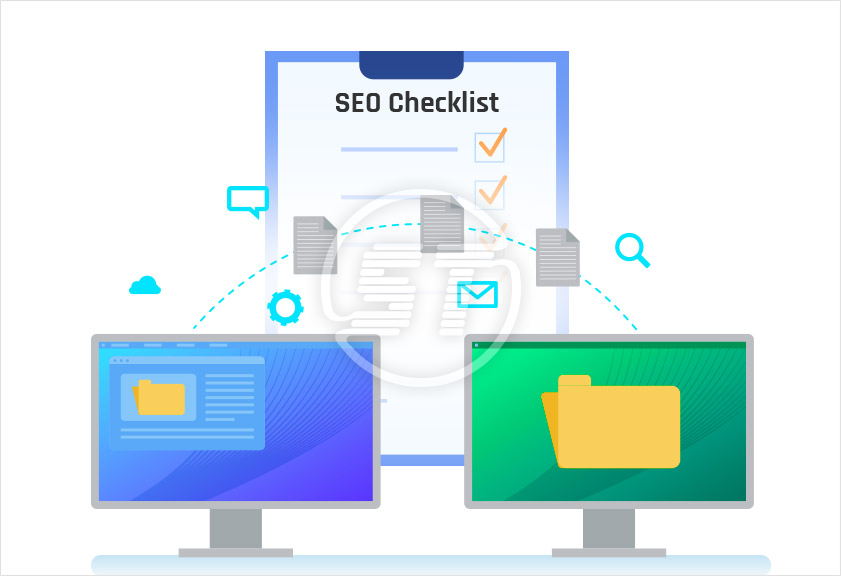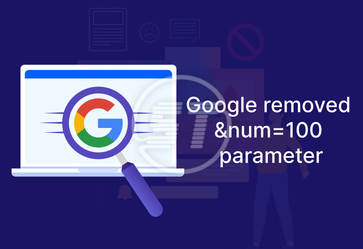Website migration implies moving to a new home or shifting to a new location. People often find themselves confused, worried and inundated due to lengthy and cumbersome migration process. Though it is a complicated process but the whole effort is worthwhile, if in the end, your website performance and security improve. But what about the website’s SEO? Is it going to remain the same, or will it change?
Brand reputation needs years of demanding work and effort, after that, a business gets a significant position on search engines. But site migration undoes all those endeavors businesses owners have done to achieve a notable search engine ranking if it is not accomplished with utmost care. Website migration is necessary due to reasons like CMS (Content Management System) upgrades, software change, website revamp, etc. And even if it has some risks associated, we cannot escape migration.
However, the right planning for pre- and post-migration can save you from a whole lot of issues and you will be able to maintain the SEO of your website even after migration. There are a few practical yet simple tips that help you to re-optimize your new website’s SEO.
Pro Tip: Every year, you face a period when your business has slowed down or had less impact. Choose that period for migration to avoid additional traffic and revenue loss as after migration website needs exceptional care and attention to rebuild its position on search engines.
Website migration SEO checklist
If you overlook monitoring the website after the migration process, you may end up witnessing some catastrophic consequences like substandard user experience, dropped website traffic, or inaccuracy in site performance tracking.
Therefore, you need to pay special attention to website SEO after migration.
Pre-migration and post-migration website analysis
Google analytics data of your pre and post migrated website can help you know the real picture of website performance. Once you have pre-migration and post-migration data, you can compare them side by side and understand which pages are not performing well. Accordingly, you can tweak the SEO strategies and focus on non-performing pages.
Run a website audit to set SEO goals
After website migration, you need to audit which pages are performing well for your website and which pages are requiring attention for their inferior performance. Also, evaluate your website in all aspects like indexing or coverage issues, compare ranking difference, technical SEO errors, speed performance, core web vitals, mobile indexing, structured data implementations, and more which can help you to measure its performance & you can easily decide which part of the website needs more attention to improve search engine rankings!
You can use tools (like Google Search Console, SEMrush, Moz, Google Analytics, etc.) to get the correct and updated data about website performance and if the information is not in your favor, then act accordingly and mitigate the root causes that are harming the website's SEO.
Website testing in a loop
Perform website testing post-migration regularly to check the performance issues. Always keep an eye on each little aspect of website that can influence website’s search engine ranking.
Crawling before website migration
It is a wise move to crawl old website before the migration to mitigate post-migration side-affects. Crawling will help you to have all the URLs of your old website, using which you can delete or replace the links that cause 404 pages and update those pages. Thereby, they will point to new relevant pages.
You may also find some important orphan pages that were not linked appropriately, link them to other pertinent pages to leverage their benefits. Also check 301 redirects to ensure your visitors will land on correct pages of the new website. While you redirect pages during migration, make sure not a single page left behind or else your users will get 404 error.
Crawling assists to check these important facets that may cause major SEO issues post-migration and become the reason of poor website performance.
Canonical tags
Google and other search engines don't like duplicate content. It is confusing for them when it comes to website ranking because they don't know which version of page to rank for the relevant keywords and queries. Moreover, too many duplicate pages impact 'crawl budget', since Google juggles between duplicate content instead of exploring new pages. Thus, to prevent your website's duplicate content problem, you must use canonical tags.
If two or more pages of your website have similar content or if some other website also has the content like your website contains, then it is wise to use canonical tags. This way, you help Google to understand which page has original content and the relevant page gets all the SEO benefits.
New and old URL mapping & redirection
You must create a document that has all the new and old URL of your website to check if all the URL's have moved to the new website or not. If you forget to move even a single page then as said above, users will get 404 error and you will see a drop in site traffic.
Furthermore, try not to change URL architecture, otherwise Google will consider it as a different website, and you will lose the ranking on search engine. There is one more important benefit of not changing URL architecture and that is, same URL architecture helps you to use regex in your .htaccess file while you move the old pages. It reduces the weight on server and makes the migration process faster.
Internal links
Check and ensure that all the HTML links on the new website point to the new website only and not the old website. The internal links must use the full URL of the corresponding page and should not rely on a redirect to evade potential errors. If each link on a new website provides expected content to the users and search engines, it will certainly improve your website ranking.
Custom 404 page
Although you should not move any page to the new website that doesn’t redirect to any relevant content. But even if there is any such page, custom 404 page is a savior. It will take your users to some relevant and useful part of your website and reduce the bounce rate. So, custom 404 page can help you maintain the SEO of your new website by holding users on the website.
Wrapping it up
Website migration is an unavoidable phenomenon at a certain point. Your website must remain updated as per market trends and to match the modern business pace. If website migration is executed without considering SEO points; your site may lose traffic and rankings. The baseline is proper pre- and post-planning is required for the website migration. With proper planning, you can ensure your business is in an improved position than before. Our goal with this article is to better prepare companies who are looking to migrate their websites; and we hope it can give you an insight into it.
We are proud to be recognized as the SEMrush Certified Agency Partner. By integrating Google Analytics, SEMrush and our AI-based predictive analytics tools; We help our clients to analyze traffic, customer journey reports, customer behavior, marketing funnel, and more to redefine and delight their customer experience. We have an expert team who can help your brand to generate more revenue and take your business to the next level through digital marketing & SEO services!
We specialize in website migration services whether you require any kind of platform migration and upgrades, API / integrations, website performance optimization, website revamp, and more. We also provide website maintenance and support services. Get in touch with us at hello@skynettechnologies.com or submit the following request free quote form to know more.


